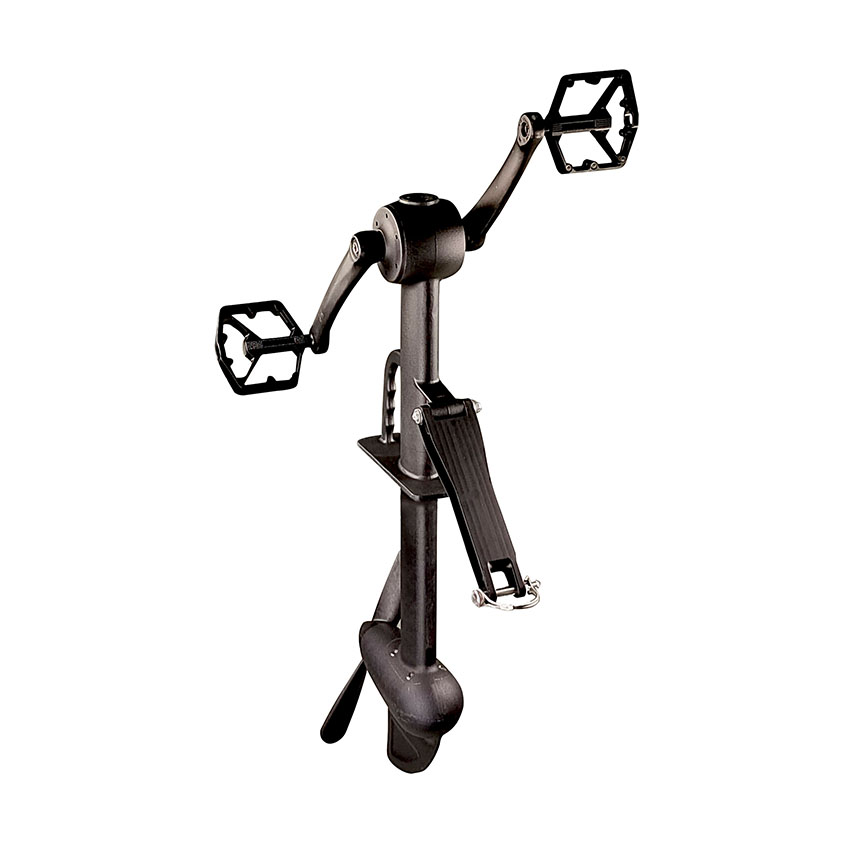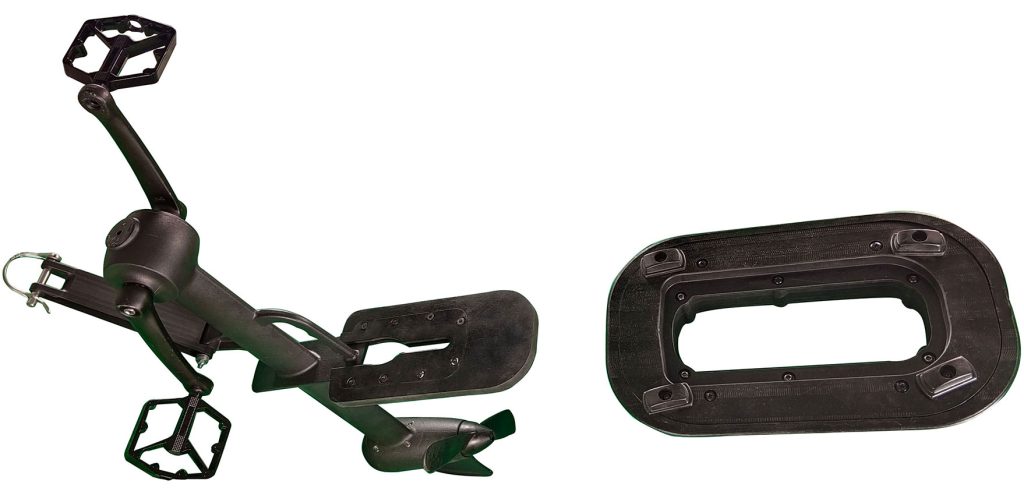Pedal drive systems for inflatable kayaks come in various designs and configurations. Here are some common types of pedal drive systems for inflatable kayaks:
1. Rotational Pedal Drive:
- This system features pedals that rotate in a circular motion, similar to pedaling a bicycle. The rotational pedal drive is often connected to a propeller or fins beneath the kayak, providing forward propulsion.
2. Push Pedal Drive:
- The push pedal drive system involves pedals that move in a linear, back-and-forth motion. This motion is translated into forward movement through a linkage system that drives a propeller or fins.
3. Flex Drive System:
- The flex drive system typically utilizes flexible fins or flippers that move side to side, creating a swimming motion. This design is often seen in inflatable kayaks and provides efficient forward propulsion.
4. Mirage Drive:
- The Mirage Drive is a specific type of pedal drive system developed by Hobie. It uses oscillating fins beneath the kayak to create a “flapping” motion, mimicking the movement of penguin flippers. This system is known for its efficiency and speed.
5. Jet Drive System:
- Some inflatable kayaks feature a jet drive system, where water is drawn into the kayak and expelled through a jet propulsion system, similar to a jet ski. This provides a powerful and efficient means of propulsion.
6. Helical Gear Pedal Drive:
- Helical gear pedal drives use a gear mechanism to convert pedal motion into rotational movement, driving a propeller. This design aims to maximize efficiency and minimize resistance.
7. Rotomolded Pedal Drive:
- In this design, the pedal drive system is encased in a rotomolded housing beneath the kayak. The pedals are connected to a propeller or fins, allowing for hands-free propulsion.
8. Drop-In Pedal Drive:
- Some inflatable kayaks are designed with a drop-in pedal drive system that can be easily inserted into a designated slot on the kayak. This allows for versatility, as users can switch between paddling and pedaling as needed.
9. Direct Drive System:
- Direct drive systems involve a direct connection between the pedals and the propeller or fins, minimizing power loss and providing efficient propulsion.
10. Crank Arm Pedal Drive:
This type of pedal drive system features a crank arm mechanism that translates the pedal motion into rotational movement, driving the propulsion system.
11. Cable-Driven Pedal Drive:
Cable-driven pedal drives use cables or similar mechanisms to transmit pedal motion to the propulsion system. This design is often compact and can be suitable for inflatable kayaks.
12. Modular Pedal Systems:
Some inflatable kayaks feature modular pedal systems that can be added or removed based on the user’s preference. This allows for flexibility in choosing between paddling and pedaling.


When choosing an inflatable kayak with a pedal drive system, consider factors such as ease of use, efficiency, versatility, and the specific type of water environments you plan to navigate. Always follow the manufacturer’s guidelines for installation, operation, and maintenance of the pedal drive system.
